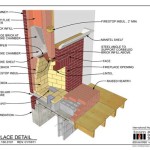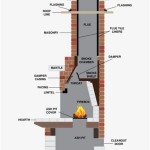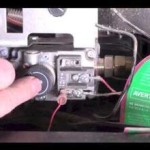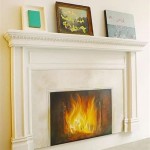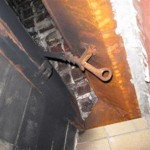```html
Built-In Cabinets Fireplace Ideas: Harmonizing Functionality and Aesthetics
The integration of built-in cabinets with a fireplace offers a sophisticated solution for homeowners seeking to maximize space and create a focal point within a room. This design strategy seamlessly blends the warmth and ambiance of a fireplace with the practical storage and display capabilities of custom cabinetry. The result is a cohesive and visually appealing environment that enhances both the aesthetic appeal and the functional utility of the living area. This article will examine various design considerations, material options, and practical aspects to ensure a successful built-in cabinets fireplace project.
Design Considerations for Built-In Fireplace Cabinets
Planning is paramount to achieving a successfully integrated built-in cabinets fireplace design. Several key design considerations need to be addressed before embarking on the project. These include the fireplace type, the desired style, the available space, and the intended functionality. Addressing these factors early in the planning process will help to streamline the design process and minimize potential issues during the construction phase.
The first consideration is the type of fireplace. Options range from traditional wood-burning fireplaces to gas fireplaces and electric fireplaces. Each type presents unique design and installation requirements. Wood-burning fireplaces, for instance, require adequate ventilation and may dictate specific clearances from combustible materials. Gas fireplaces necessitate gas line connections and venting considerations. Electric fireplaces, while offering greater flexibility in placement due to their lack of venting requirements, may still require dedicated electrical circuits. The choice of fireplace type directly impacts the design of the surrounding cabinets and the overall structural requirements.
The desired style is another crucial aspect of the design process. Built-in cabinets can be designed to complement a wide range of architectural styles, from traditional to contemporary. Traditional styles often incorporate ornate details, raised panel doors, and rich wood finishes. Contemporary styles, on the other hand, typically feature clean lines, minimalist designs, and modern materials such as glass, metal, and engineered wood. The style of the cabinets should harmonize with the existing décor of the room and reflect the homeowner's personal preferences. Considerations for the finish, hardware, and overall design aesthetic are essential to achieving a cohesive look.
Available space significantly influences the design and layout of the built-in cabinets. A large room allows for more expansive designs that incorporate ample storage and display areas. Smaller rooms, however, require a more strategic approach to maximize space without overwhelming the area. In tight spaces, it may be necessary to opt for shallower cabinets, incorporate vertical storage solutions, or choose a more compact fireplace model. Careful measurement and space planning are crucial to ensure that the built-in cabinets fit comfortably within the room and do not impede traffic flow.
Finally, the intended functionality of the built-in cabinets should be carefully considered. Cabinets can serve a variety of purposes, including storing books, media equipment, decorative items, and firewood (if applicable). The specific storage needs will dictate the size, configuration, and number of cabinets and shelves. For example, cabinets designed to house media equipment will require adequate ventilation and cable management solutions. Cabinets intended for display purposes may benefit from integrated lighting and glass shelves. Considering the intended use of the cabinets ensures that the final design meets the homeowner's practical needs and enhances the overall functionality of the space.
Material Selection for Built-In Fireplace Cabinets
The choice of materials for built-in fireplace cabinets directly affects their durability, aesthetic appeal, and overall cost. A wide range of materials are available, each with its unique characteristics and advantages. Common material choices include wood, plywood, medium-density fiberboard (MDF), metal, and stone or brick accents. Understanding the properties of each material and how they interact with the fireplace is crucial to ensuring a long-lasting and visually appealing result.
Wood is a classic choice for built-in cabinets, prized for its natural beauty, warmth, and versatility. Hardwoods such as oak, maple, cherry, and walnut are popular options, offering superior durability and resistance to wear and tear. Softwoods, such as pine, are more affordable but may require additional protection and finishing. When selecting wood for fireplace cabinets, it is essential to choose kiln-dried lumber to minimize the risk of warping or cracking due to heat exposure. The type of wood and its finish can significantly impact the overall aesthetic of the cabinets, ranging from traditional to contemporary.
Plywood is a cost-effective alternative to solid wood, offering excellent strength and stability. High-quality plywood is constructed from multiple layers of thin wood veneers, bonded together with adhesive. This construction makes plywood less prone to warping and cracking compared to solid wood. When using plywood for fireplace cabinets, it is crucial to choose a grade suitable for interior applications and to ensure that the edges are properly sealed to prevent moisture absorption. Plywood can be finished with paint, stain, or veneer to achieve the desired aesthetic.
Medium-density fiberboard (MDF) is an engineered wood product made from wood fibers bonded together with resin. MDF is known for its smooth surface, consistent density, and affordability. It is an excellent choice for painted cabinets, as it provides a uniform surface for paint application. However, MDF is more susceptible to moisture damage than solid wood or plywood and should be properly sealed and protected in areas prone to humidity or spills. MDF is also less resistant to heat than solid wood and may not be suitable for cabinets directly adjacent to a fireplace.
Metal accents can add a touch of modern elegance and sophistication to built-in fireplace cabinets. Metal can be used for cabinet hardware, trim, shelving, or even entire cabinet doors. Common metal choices include stainless steel, brushed nickel, and wrought iron. Metal accents can complement a variety of styles, from contemporary to industrial. When using metal near a fireplace, it is essential to choose a material that is resistant to heat and corrosion. Stainless steel is a particularly durable and heat-resistant option.
Stone or brick accents can be incorporated into built-in fireplace cabinets to create a rustic or traditional look. Stone or brick can be used for the fireplace surround, the cabinet base, or even as decorative inlays on the cabinet doors. These materials add texture and visual interest to the design. When using stone or brick, it is important to ensure that the surrounding cabinets are properly reinforced to support the added weight. Additionally, the stone or brick should be sealed to prevent staining and moisture absorption.
Practical Considerations for Installation and Safety
The installation of built-in fireplace cabinets requires careful planning and execution to ensure both safety and functionality. Several practical considerations must be addressed, including code compliance, ventilation, electrical requirements, and heat resistance. Addressing these issues during the planning and installation phases minimizes the risk of safety hazards and ensures the long-term performance of the built-in cabinets.
Code compliance is a paramount consideration when installing built-in fireplace cabinets. Building codes vary by location and may dictate specific requirements for fireplace clearances, ventilation, and electrical connections. It is essential to consult with local building officials and obtain the necessary permits before beginning the installation process. Failure to comply with building codes can result in costly fines and delays, as well as potential safety hazards. Codes may also specify the types of materials that can be used near a fireplace and the required fire-resistance ratings.
Ventilation is crucial, particularly for wood-burning and gas fireplaces. Proper ventilation ensures that combustion gases are safely exhausted from the building and prevents the buildup of carbon monoxide. Building codes typically require specific venting configurations and clearances for these types of fireplaces. The design of the built-in cabinets should not obstruct the fireplace's ventilation system. Additionally, cabinets designed to house media equipment or other electronics should incorporate adequate ventilation to prevent overheating.
Electrical requirements must be addressed when installing electric fireplaces or cabinets that house electronic equipment. Electric fireplaces require dedicated electrical circuits and may need to be hardwired into the electrical system. Cabinets housing media equipment should include electrical outlets and cable management solutions to organize wires and prevent clutter. It is essential to consult with a qualified electrician to ensure that all electrical work is performed safely and in compliance with local codes.
Heat resistance is a critical consideration when selecting materials and designing built-in cabinets near a fireplace. Materials used in close proximity to the fireplace should be able to withstand high temperatures without warping, cracking, or igniting. Non-combustible materials, such as stone, brick, and metal, are ideal for fireplace surrounds and areas directly exposed to heat. Wood and wood products should be treated with fire-retardant coatings to reduce their flammability. Additionally, it is important to maintain adequate clearances between the fireplace and combustible materials to prevent fires.
The installation process itself should be carefully planned and executed. Built-in cabinets are typically custom-built to fit the specific dimensions of the fireplace and the surrounding space. Accurate measurements and precise cuts are essential to ensure a seamless fit. Professional installation is recommended, particularly for complex designs or when working with gas or electrical connections. A professional installer will have the necessary tools, expertise, and experience to ensure that the cabinets are installed safely and correctly.
Finally, regular maintenance is essential to prolong the life of built-in fireplace cabinets and ensure their continued safety. Regularly inspect the cabinets for signs of damage, such as cracks, warping, or water damage. Clean the cabinets regularly with appropriate cleaning products to remove dust, dirt, and grime. If the cabinets are finished with wood, apply a protective coating of varnish or sealant to prevent moisture absorption and protect the finish. For fireplaces with wood-burning capabilities, ensure that the chimney is regularly inspected and cleaned to prevent creosote buildup, which can pose a fire hazard.
```
Diy Fireplace With Built Ins One Room Challenge Weeks 1 3 Marissa Cal Home

Built Ins Around A Fireplace 10 Inspiring Ideas To Elevate Your Living Room Jenna Kate At Home

Best Built In Bookshelves Around A Fireplace Design Ideas Decoholic

Built Ins Around A Fireplace 10 Inspiring Ideas To Elevate Your Living Room

35 Fireplace With Built Ins On Both Sides Ideas For Decor

Built In Shelves Around Tv Shelving Over Fireplace

Gray Fireplace Built In Cabinets Design Ideas
:max_bytes(150000):strip_icc()/CASSPhoto_JND_Annisipour_032-c8ffdbc77bd74c42a3c82d0f19f24295.jpg?strip=all)
34 Clever Fireplace Built In Ideas To Maximize Style

Built Ins Flanking Fireplace Design Ideas

Fireplace Built Ins Design Ideas



